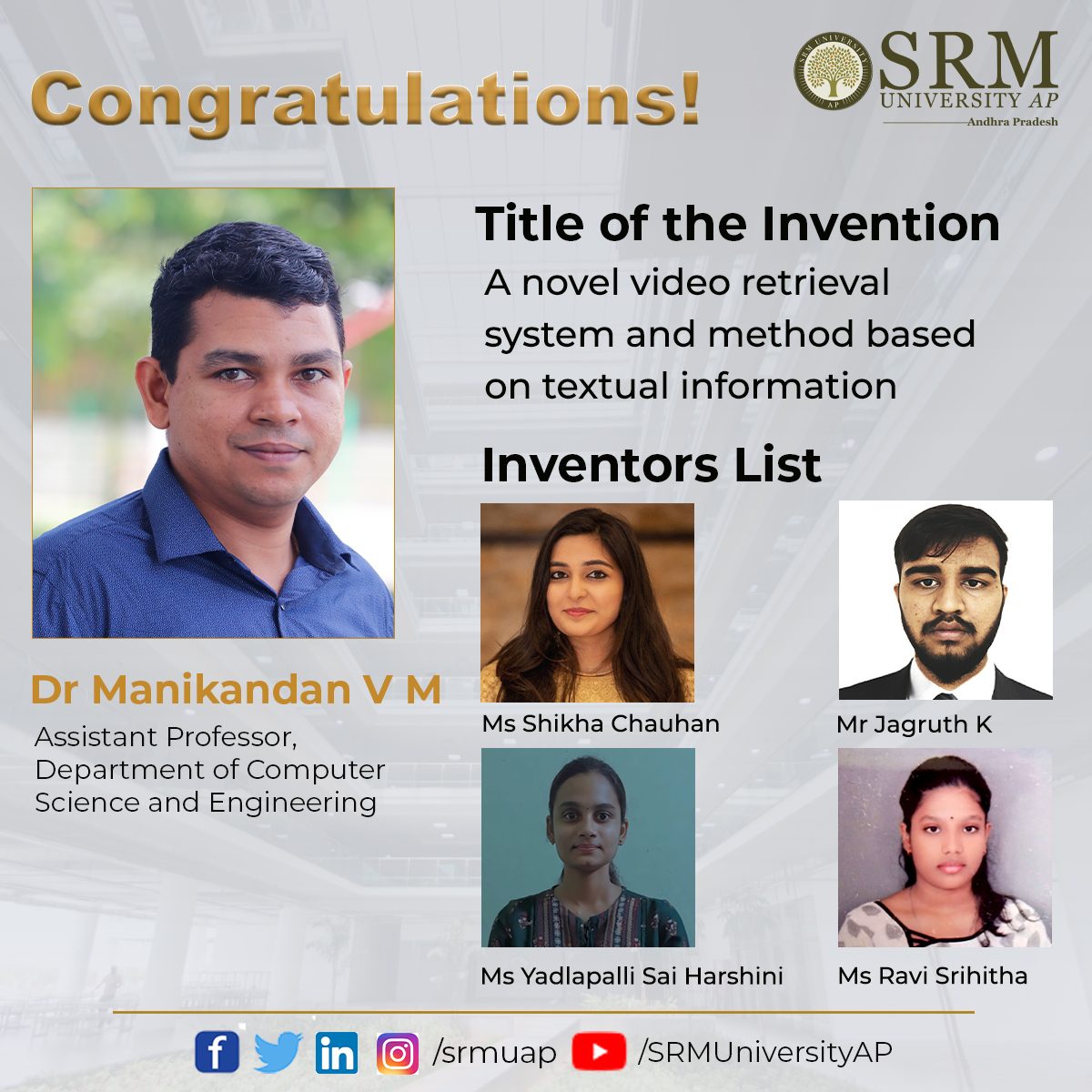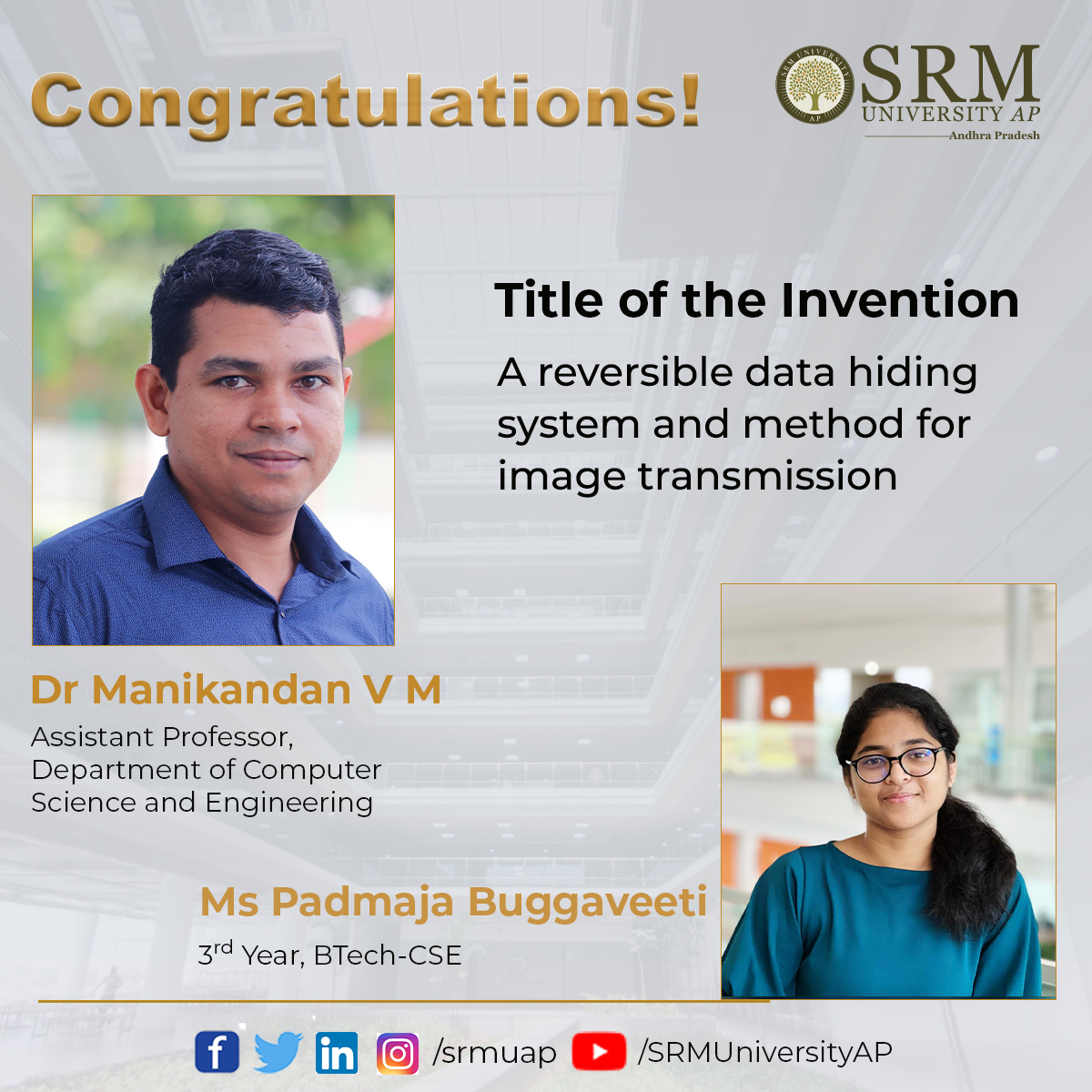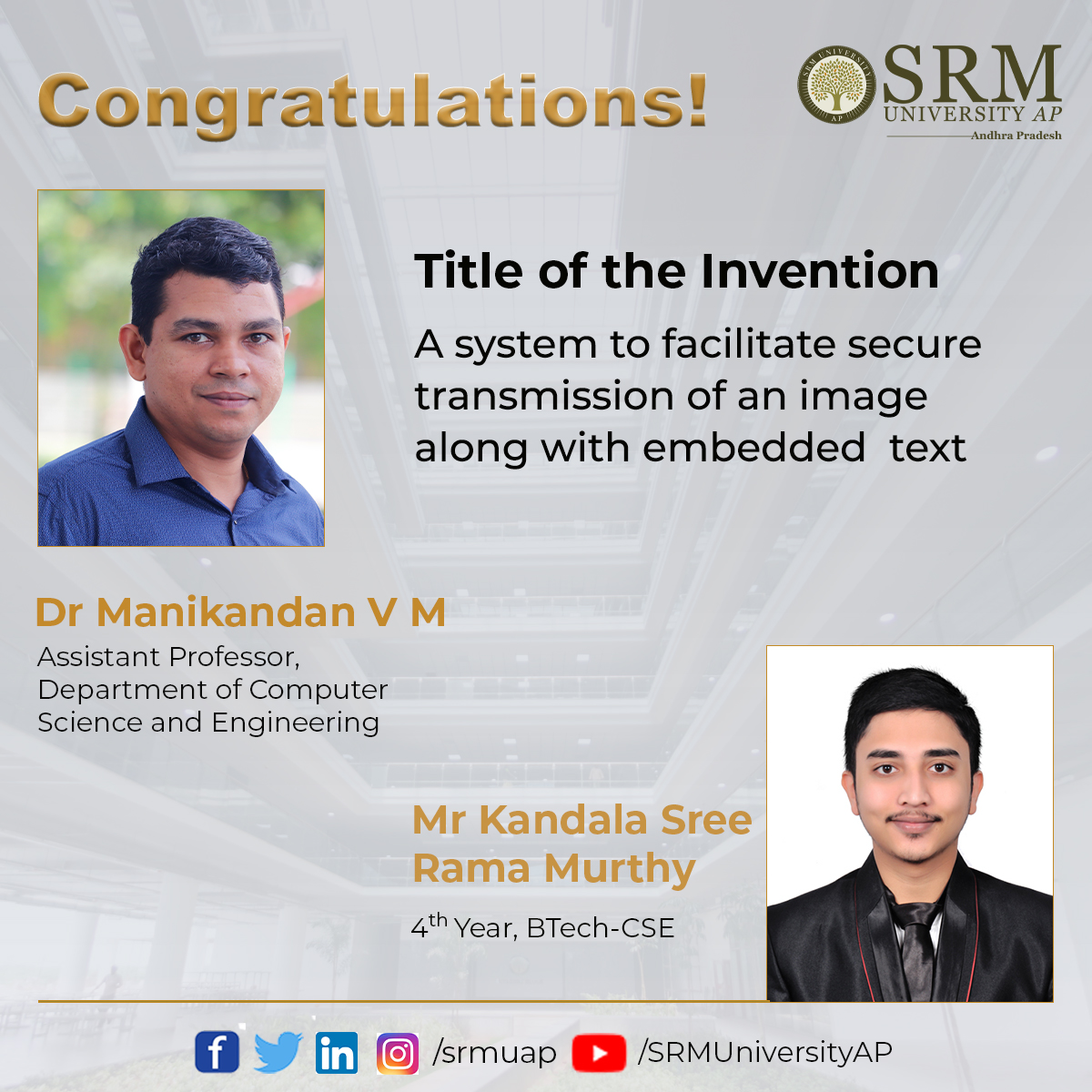The Department of Computer Science and Engineering is pleased to announce the publication of three different patent applications from the department. The patent applications were submitted by the BTech students; Mr Kandala Sree Rama Murthy, Ms Padmaja Buggaveeti, Ms Yadlapalli Sai Harshini, Mr Jagruth K, Ms Shikha Chauhan, and Ms Ravi Srihitha under the guidance of Assistant Professor Dr V M Manikandan. They are making the institution proud with their passion and enthusiasm for the research domain.
 The invention of a new scheme that will help to retrieve relevant videos from a large pool based on the given keyword is an impressive concept with societal relevance. Dr V M Manikandan and BTech students; Ms Yadlapalli Sai Harshini, Mr Jagruth K, Ms Shikha Chauhan, and Ms Ravi Srihitha got their patent application titled A novel video retrieval system and method based on textual information (application number: 202241002653) published.
The invention of a new scheme that will help to retrieve relevant videos from a large pool based on the given keyword is an impressive concept with societal relevance. Dr V M Manikandan and BTech students; Ms Yadlapalli Sai Harshini, Mr Jagruth K, Ms Shikha Chauhan, and Ms Ravi Srihitha got their patent application titled A novel video retrieval system and method based on textual information (application number: 202241002653) published.
The conventional video retrieval system uses the metadata to retrieve the appropriate videos. The new scheme processes the video and identifies the text information within the video, which will be compared with the given keyword. They introduced a scene change detection technique to select the frames for further processing in the new system to reduce the overall processing time.
The new scheme will help to retrieve appropriate educational videos from a large video pool based on the given keyword. The processing time is a significant concern in the scheme proposed. The researchers’ future work will be focused on improving the time complexity of the scheme.
 The other research team invented a prediction error histogram shifting-based approach to hide secret messages in a cover image. The patent application submitted by Dr V M Manikandan and Third-year BTech-CSE Student, Ms Padmaja Buggaveeti, is titled A reversible data hiding system and method for image transmission (application number: 202241002654). The method ensures the lossless recovery of the original image during data extraction. The researchers considered the overflow issues in the histogram shifting approach and proposed an efficient method to handle this.
The other research team invented a prediction error histogram shifting-based approach to hide secret messages in a cover image. The patent application submitted by Dr V M Manikandan and Third-year BTech-CSE Student, Ms Padmaja Buggaveeti, is titled A reversible data hiding system and method for image transmission (application number: 202241002654). The method ensures the lossless recovery of the original image during data extraction. The researchers considered the overflow issues in the histogram shifting approach and proposed an efficient method to handle this.
Reversible Data Hiding (RDH) provides a way to embed some data in a selected image so that in the future, the hidden data can be extracted along with the recovery of the original image. The new RDH scheme invented by the researchers can be used in the healthcare sector to embed patient reports in medical images, or cloud service providers can use it to embed metadata in the digital data. Their future work will focus on designing and implementing robust reversible data hiding schemes capable of resisting attacks.
 A system to facilitate secure transmission of an image along with embedded text (application number: 202241005221) is the third patent application that got published and was submitted by Dr V M Manikandan and Final year B.Tech-CSE Student Mr Kandala Sree Rama Murthy. The researchers invented a method to embed a message into a selected image during the image encryption process, which provides secure transmission of messages. The receiver will be able to extract the hidden message during decryption. The presented method is useful in medical image transmission to store patient details in the medical image.
A system to facilitate secure transmission of an image along with embedded text (application number: 202241005221) is the third patent application that got published and was submitted by Dr V M Manikandan and Final year B.Tech-CSE Student Mr Kandala Sree Rama Murthy. The researchers invented a method to embed a message into a selected image during the image encryption process, which provides secure transmission of messages. The receiver will be able to extract the hidden message during decryption. The presented method is useful in medical image transmission to store patient details in the medical image.
The transmission of medical images and health reports from one hospital to another is widespread in the healthcare sector. Hospitals may want to handle many medical images and health reports every day and ensuring the one-to-one correspondence between them is a tedious task. The invented method will help embed health reports in medical images during encryption. The encrypted medical images (embedded with health reports) can be transmitted securely. The receiver will be able to extract the hidden message after medical image decryption. The researchers’ future work will focus on improving the invented method’s embedding capacity so that lengthy reports can be embedded into the medical images.

